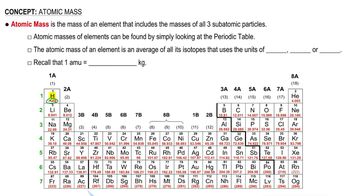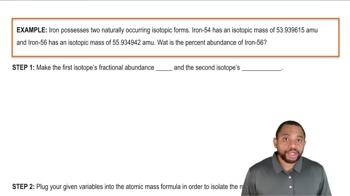Here are the essential concepts you must grasp in order to answer the question correctly.
Atomic Weight vs. Atomic Mass
Atomic weight is a weighted average of the masses of an element's isotopes, reflecting their relative abundances in nature. In contrast, atomic mass refers to the mass of a specific isotope, measured in atomic mass units (u). Since boron has isotopes with different masses, the atomic weight of 10.81 u does not correspond to any single boron atom.
Recommended video:
Isotopes
Isotopes are variants of a chemical element that have the same number of protons but different numbers of neutrons, resulting in different atomic masses. Boron has two stable isotopes: boron-10 (10 u) and boron-11 (11 u). The presence of these isotopes contributes to the average atomic weight of boron being 10.81 u, as it accounts for their relative abundances.
Recommended video:
Relative Abundance
Relative abundance refers to the proportion of each isotope of an element found in a natural sample. For boron, the atomic weight of 10.81 u is calculated based on the relative abundances of its isotopes, boron-10 and boron-11. This average reflects the typical composition of boron in nature, rather than the mass of any individual atom.
Recommended video:
Calculating Abundance Example




